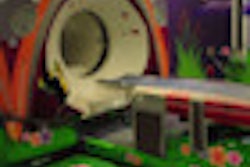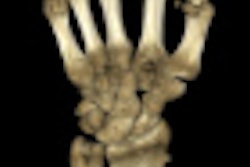Tuesday, November 30 | 11:50 a.m.-12:00 p.m. | SSG13-09 | Room S403A
In another presentation from the University of Chicago, researchers will show how virtual colonoscopy computer-aided detection (CAD) software can assist in identifying difficult polyps.The researchers sought to determine if their CAD application for virtual colonoscopy (also known as CT colonography or CTC) could improve the performance of expert radiologists in detecting "difficult" polyps, which were either polyps missed by radiologists in a multicenter clinical trial or rated as "difficult" in their retrospective review, said presenter Kenji Suzuki, PhD.
It did. The CAD system, which utilizes massive-training artificial neural networks (MTANN), yielded a sensitivity of 74% for difficult polyps, with a false-positive rate of 3.1 per patient. In comparison, a current CAD system provided a sensitivity of only 43%, with a false-positive rate of 5.6 per patient.
The average sensitivity of four expert radiologists also increased as a result of CAD, improving from 53% to 63%. The difference was statistically significant, Suzuki said.
"It was proved that a computer-aided detection system can improve expert radiologists' sensitivity in the detection of 'difficult' polyps in CT colonography," Suzuki told AuntMinnie.com.





















